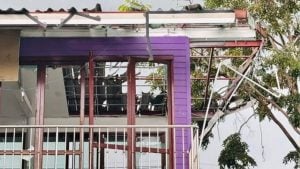Burmese military expanding surveillance and facial recognition

In what they claim to be a bid to keep cities safe and secure and preserve civil peace, the military junta controlling Myanmar is installing facial recognition cameras made in China in cities all across the turbulent country. This surveillance began after the military coup in February 2021, and at least 5 cities are already under their watchful eye.
This information comes from 3 people who are either currently or previously involved in the camera surveillance programme but who asked to remain anonymous for fear of military retribution. Reuters tried to verify the story but was unable to see the order paperwork or reach any of the 10 municipal governments in Myanmar, all controlled by the military.
Local media reported that Myanmar’s previous democratically-elected leader Aung San Suu Kyi had originally started a camera programme in 5 cities that was geared toward crime prevention, but the junta seems to be upgrading and expanding with many fearful that the face recognition software could be used to quash dissent.
Sources claiming to have been briefed twice on the plans say that this new camera surveillance system will be expanded into all 7 states and 7 regions of the country. The new cameras and associated technology are said to be sourced from Chinese surveillance companies Huawei, and Zhejiang Dahua Technology, who have yet to comment on the issue, and Hikvision, who stated they had not sold facial recognition technology in Myanmar or sold anything directly to the military junta.
CCTV surveillance systems like this are not uncommon in cities around the world to discourage crime, but the trend toward integration of facial recognition has been controversial, with some saying it crosses a line. Cities in China use facial recognition and artificial intelligence to match faces to people in real-time, and US police forces have been incorporating the technology more and more.
But for a country that just suffered through a military takeover and over a year of turmoil with violent and deadly suppression of protesting citizens by the ruling junta, the intentions of the surveillance systems come under intense scrutiny. Human rights groups fear that the surveillance can help those in power identify gathering areas, transportation, safe houses, connections between citizens and even follow all the movements of activists and dissidents.
The military junta in Myanmar is already known to be using spyware with phone and internet providers that monitor private communications and an Burmese officer who defected described control rooms were soldiers monitored CCTV cameras already in place.
Mawlamyine, Myanmar’s 4th largest city, was one of the first after the coup to start having these surveillance cameras installed, with over 200 now in operation and more on the way. The capital city of Naypyidaw and former capital city Yangon already had CCTV systems in place, with surveillance planned for Mandalay before the coup.
But the expansion into 10 cities around the country, as well as upgrading to incorporate more facial recognition software, is an alarming development in a country struggling and oppressed by the military junta.
SOURCE: Thai PBS World
Latest Thailand News
Follow The Thaiger on Google News:


























